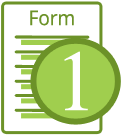January 26, 2011 (Chris Moore)

Despite a jump in new home sales of 17.5 percent from November to December, total sales for all of 2010 totaled 321,000 units, the fewest number of new homes sold in 47 years. It was the fifth consecutive year that sales have declined after hitting record highs for the five previous years when the housing market was booming according to data released by the Commerce Department.
The year ended on a stronger note. Buyers purchased new homes at a seasonally adjusted annual rate of 329,000 units in December, a 17.5 percent increase from the November pace.
Still, economists say it could be years before sales rise to a healthy rate of 600,000 units a year. David Crowe, chief economist for the National Association of Home Builders (NAHB) predicts that new home sales will increase 25 percent in 2011 to 405,000.
Crowe sees several factors as contributing to a budding recovery, including a rebound in consumer confidence that has seen rising sales in big-ticket items like autos and furniture, suggesting consumers are becoming less worried about job security. The recently enacted 2 percent cut in Social Security taxes for one year should also boost consumer spending to around the 3.5-3.8 percent level, up from 2.5 percent in 2010.
But builders of new homes are struggling to compete in markets saturated with foreclosures. High unemployment and uncertainty over home prices have kept many potential buyers from making purchases.
With over six million homes in some stage of foreclosure and a predicted 1.5 to 1.8 million homes expected to join that amount this year, home builders might find the competition for home buyers a lot tougher this year than last.
The effects of the foreclosure crisis was certainly felt this year, as NAHB predicted in January 2010 that housing starts would rise to 610,000 units but only about 475,000 homes were actually built.
But builders still see a reason to be optimistic. Demographic factors also figure to help boost the housing market in 2010. Crowe said multifamily housing should get a significant boost from a disproportionate number of Generation Y members moving into the housing market. He predicted they would help produce a 16 percent boost in multifamily housing starts this year and a 53 percent increase in 2012, to an annual level of 203,000 units.
Frank Northaft, Freddie Mac chief economist agrees, noting that research from the Harvard Joint Center for Housing Studies predicts that U.S. households will increase at a rate of 1.2 million – 1.5 million over the next 5-10 years, driving a need for new housing.
The median price of a new home rose to $241,500 in December, up from a November median of $215,500. For all of 2010, the median sales price was $221,900, up 2.4 percent from the 2009, however, economists expect overall home prices will continue to fall until at least midyear as foreclosures continue to saturate the market.
For December, sales rose in all parts of the country except the Northeast, which saw a 5 percent decline. Sales surged 71.9 percent in the West and were up 3.2 percent in the Midwest and 1.8 percent in the South.
Tags: new home sales, housing starts, median price, foreclosure crisis, demographics, low mortgage rates, consumer confidence, budding recovery




